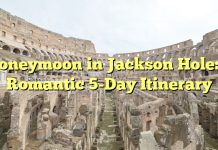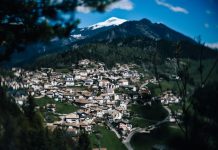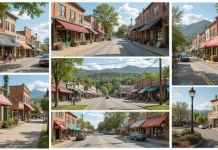The Rich Tapestry of Native American Heritage
Understanding the Significance of Native American Cultural Sites
The United States is home to a plethora of vibrant Native American cultures, each with its own rich history and traditions that have been preserved across countless generations. These cultures are deeply embedded in the land, and the historical sites left behind offer an invaluable glimpse into the lives and legacies of the country's Indigenous peoples. Exploring these sites is not just a journey through history, but an opportunity to connect with the spiritual and cultural fabric that has shaped the nation.
The Spirit of Preservation and Respect
When engaging with these cultural sites, it’s important to approach with sensitivity and respect. Many of these sites hold immense spiritual significance to Native communities, functioning as sacred spaces for rituals, ceremonies, and cultural gatherings. Understanding and honoring this significance ensures a respectful and meaningful visit that supports ongoing preservation efforts.
Highlights of Prominent Native American Cultural Sites
Mesa Verde National Park: A Glimpse into the Ancestral Puebloans
The Historical Context
Located in Colorado, Mesa Verde National Park is a treasure trove of archaeological wonders. This UNESCO World Heritage Site encompasses over 600 cliff dwellings, constructed by the Ancestral Puebloans over 700 years ago. These structures, built into the natural alcoves of the cliffs, reflect a sophisticated knowledge of architecture and sustainable living.
Exploring the Cliff Dwellings
Visitors can embark on ranger-led tours to explore iconic sites such as the Cliff Palace, Balcony House, and Long House. These guided tours provide in-depth insight into the daily lives of the Ancestral Puebloans, showcasing their innovative water-storage systems, farming practices, and artistic achievements.
Chaco Culture National Historical Park: Traces of a Great Civilization
A Center of Commerce and Culture
Nestled in northwestern New Mexico, Chaco Culture National Historical Park was one of the most important cultural centers in pre-Columbian America. Between 900 and 1150 AD, it served as a hub for trade, ceremony, and politics for a vast region of the American Southwest.
Discovering the Great Houses
The park is renowned for its monumental architecture, including multi-story “great houses” such as Pueblo Bonito and Chetro Ketl, built with precision-aligned stones and timber. The intricate road systems and astronomical alignments found here indicate a highly organized society with advanced knowledge of astronomy and engineering.
Taos Pueblo: A Continuously Inhabited Jewel
A Living Heritage Site
Taos Pueblo, a UNESCO World Heritage Site in New Mexico, is one of the oldest continuously inhabited communities in the United States. For over a thousand years, the Tiwa-speaking Native American community has called these adobe structures home, maintaining a deeply rooted cultural tradition.
Experiencing Daily Life
Visitors to Taos Pueblo can witness the vibrant cultural practices of the Pueblo people. Traditional crafts, pottery making, and adobe construction techniques are demonstrated, providing a fascinating look into a lifestyle that bridges the past and present.
Exploring Lesser-Known Native American Sites
Acoma Pueblo: The Sky City
Perched on a Mesa
Acoma Pueblo, located in New Mexico, is often referred to as “Sky City” due to its location atop a 367-foot-high sandstone mesa. This ancient community is known for its stunning views and well-preserved traditional architecture.
Connection with the Ancestors
Tours led by Acoma residents offer an authentic glimpse into their culture and history. Visitors learn about the spiritual significance of the area, including Haak'u, the community's place of origin, and gain insights into traditional Acoma pottery and art forms.
Effigy Mounds National Monument: Sacred Earthworks
Ancestral Significance
Located in Iowa, Effigy Mounds National Monument encompasses over 200 prehistoric mounds built by Native cultures between 800 and 1600 AD. These mounds, constructed in the shapes of animals such as bears and birds, are believed to hold ceremonial significance.
Walking Among the Effigies
Visitors can explore hiking trails that meander through lush landscapes and reveal these ancient earthworks. Interpretive programs and exhibits shed light on the cultural context and the spiritual connections these mounds maintained with their builders.
Bears Ears National Monument: A Sacred Landscape
A Collaborative Conservation Effort
Located in Utah, Bears Ears National Monument is a testament to a successful collaboration between the federal government and Native American tribes to preserve sacred land. The monument spans over 1.3 million acres of ecologically diverse terrain that holds deep significance to the Navajo, Ute, and other tribes.
Delving into the Wilderness
The expansive landscape offers opportunities for hiking, exploring ancient cliff dwellings, and discovering petroglyphs. Guided tours by tribal members provide an enriched understanding of the cultural and historical importance of the land.
Engaging with Native American Communities
The Importance of Cultural Exchange
Visiting Native American cultural sites is more than an exploration of the past; it is an opportunity for cultural exchange and learning. Engaging with Native communities allows for a deeper understanding of their perspectives and contemporary issues.
Cultural Centers and Museums: Windows into Native American History
The National Museum of the American Indian
Located in Washington, D.C., the National Museum of the American Indian offers comprehensive exhibits that highlight the rich tapestry of Native American life across the continent. Displays featuring art, history, and cultural artifacts provide visitors with a multi-faceted understanding of Native contributions to society.
Heard Museum
Situated in Phoenix, Arizona, the Heard Museum is renowned for its dedication to the advancement of American Indian art. The museum's collections and educational programs focus on the art and cultures of Native peoples of the Americas, emphasizing the contributions of regional tribes.
Participating in Native American Festivals and Events
The Gathering of Nations
The Gathering of Nations, held annually in Albuquerque, New Mexico, is the world's largest Pow Wow. Drawing tribes from across North America, this multi-day event features traditional dancing, drumming, crafts, and food, offering a vibrant celebration of Native culture.
Nearby Tribal Events
Local tribal events and festivals offer an intimate setting to learn about Native traditions. From the Navajo Nation Fair in Arizona to the Shinnecock Indian Pow Wow in New York, these gatherings allow for personal interactions and cultural immersion.
Paving the Path for Future Exploration
Embracing a Respectful Approach
While exploring Native American cultural sites, embracing an attitude of respect and mindfulness is crucial. Recognizing the sacred and historical importance of these locations fosters a greater appreciation for their preservation and an enhanced understanding of their legacy.
Cultivating Awareness and Advocacy
Visitors can contribute to the preservation of Native American heritage by supporting conservation initiatives and advocating for the protection of sacred sites. Engaging with local conservation organizations and paying attention to ongoing legal issues that impact these areas can help ensure their protection for future generations.
Connecting Through Stories and Traditions
Listening to the stories and oral traditions shared by Native community members provides a valuable connection to their living cultures. Through carefully chosen words and gestures, these stories help bridge the gap between past and present, allowing visitors to leave with a richer and more profound understanding of Native American history, culture, and resilience.
By embarking on journeys to these cultural sites, visitors not only explore the fascinating histories of Native American communities but also become part of a broader narrative of understanding and respect that continues to shape the American landscape.































